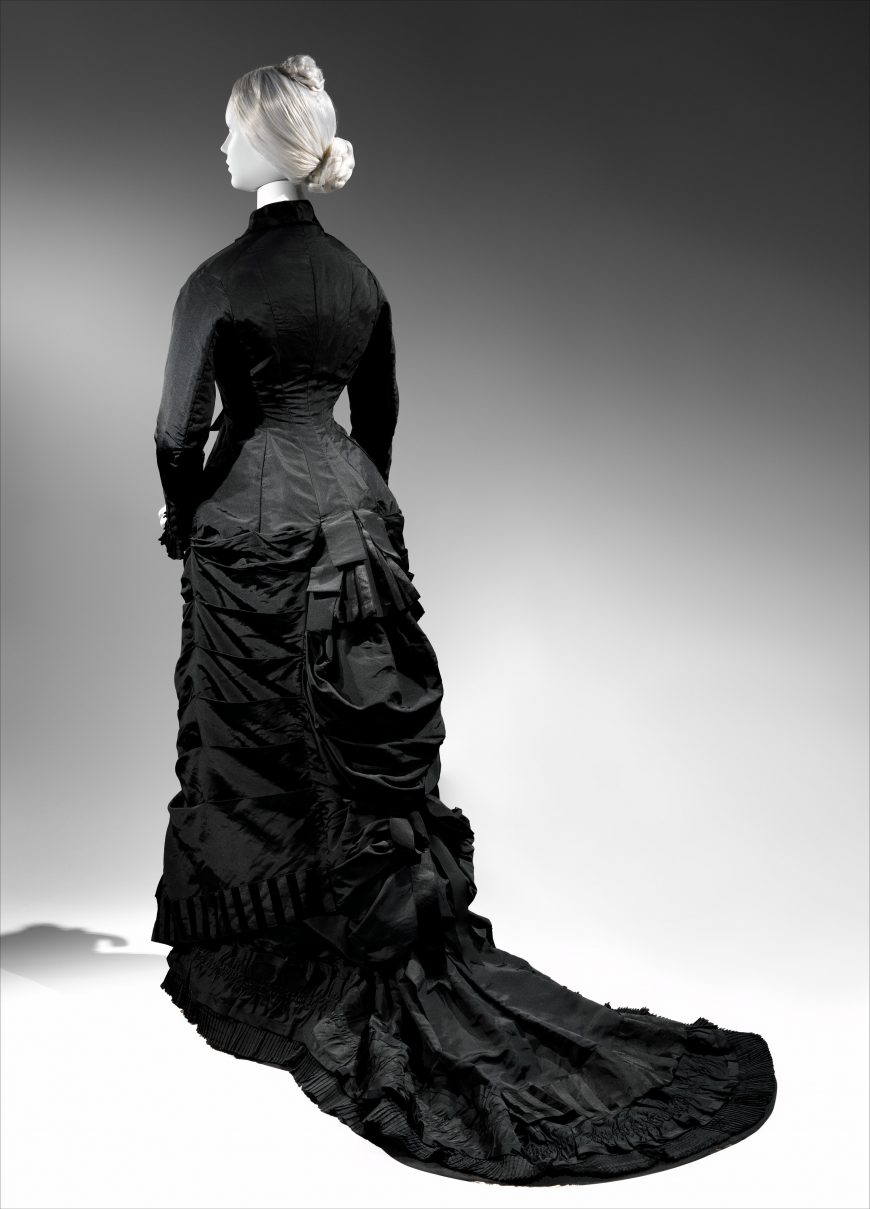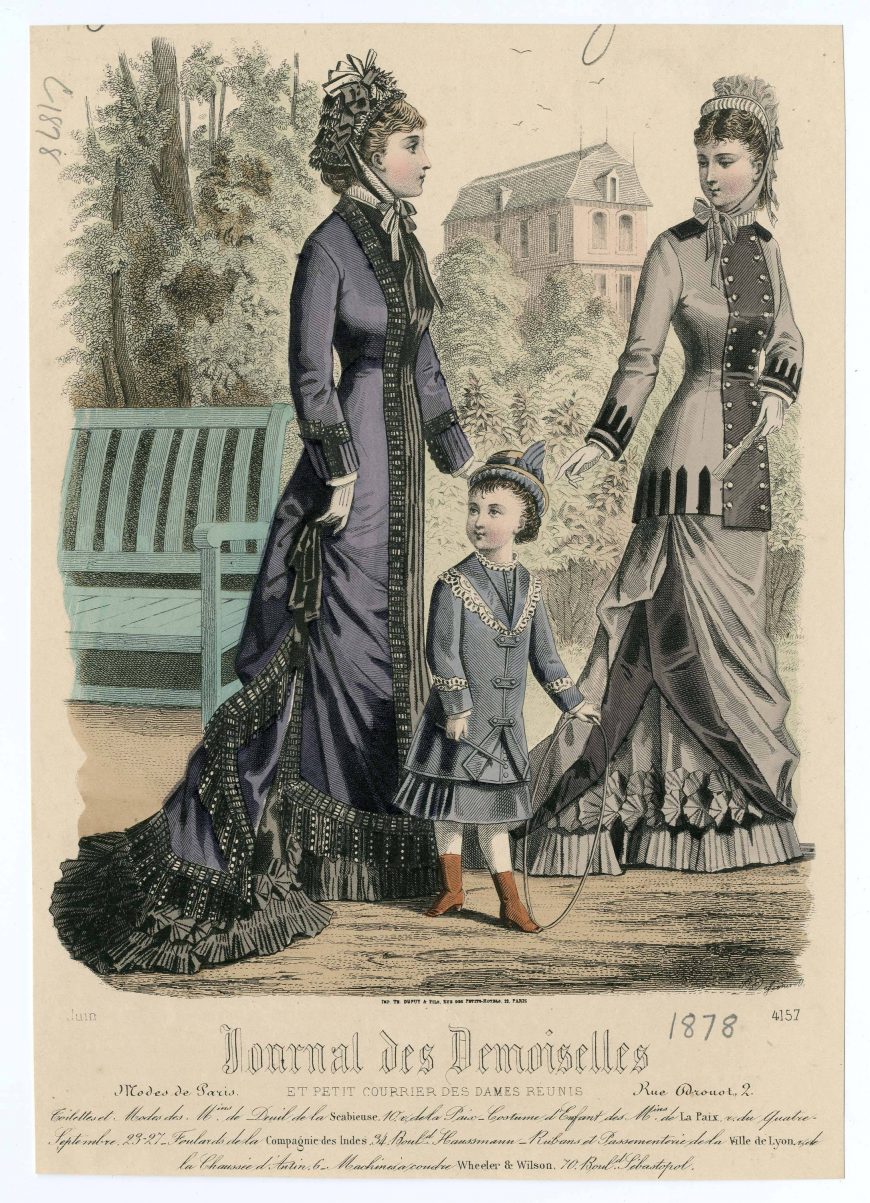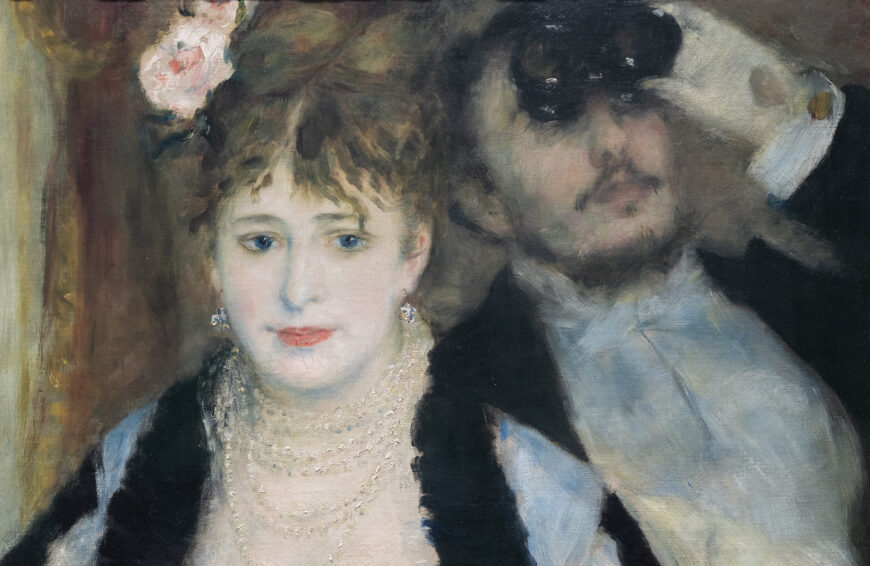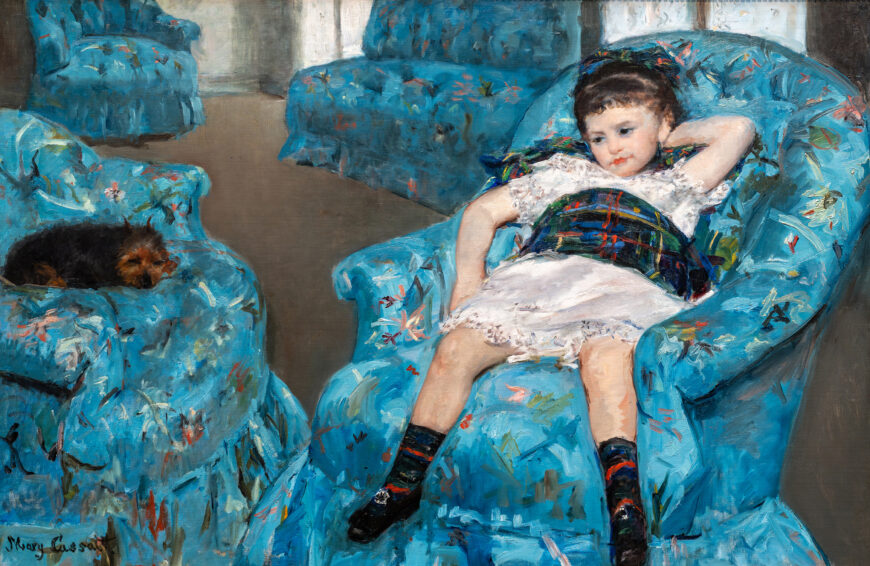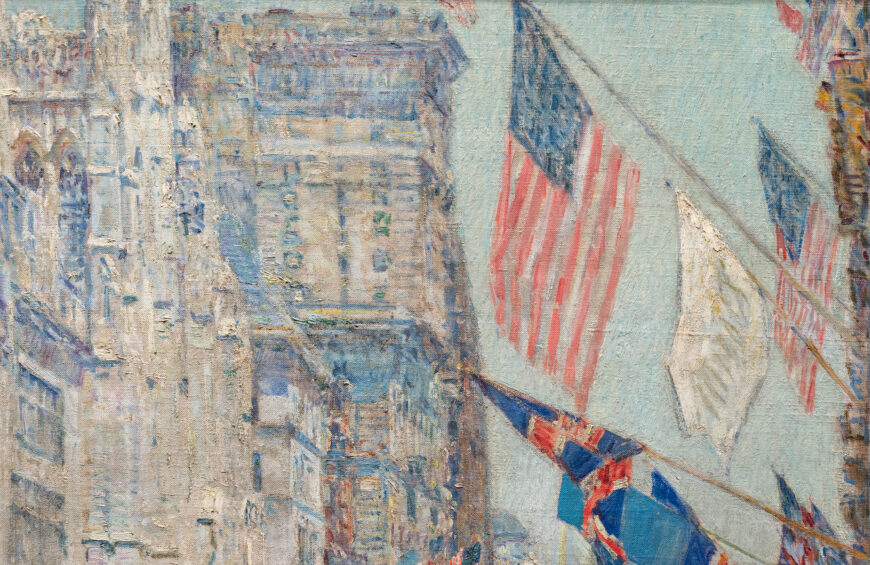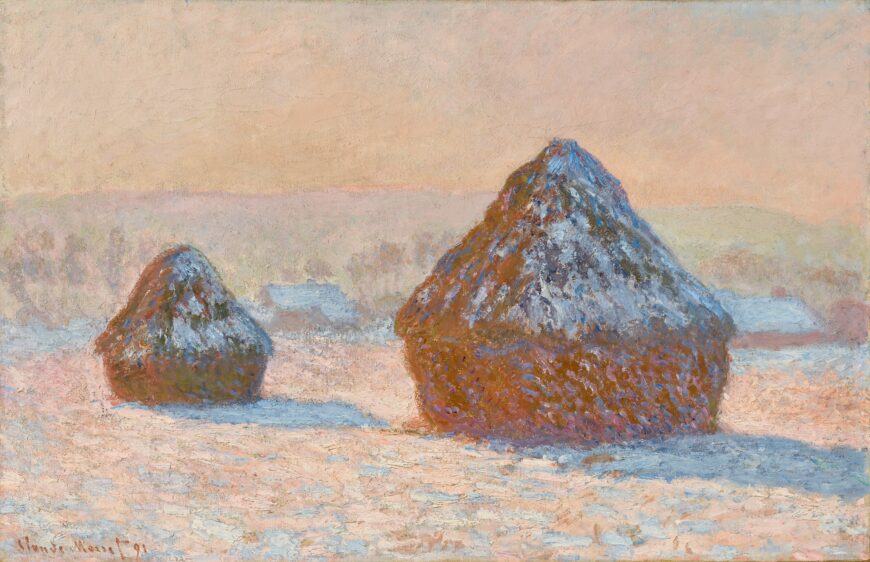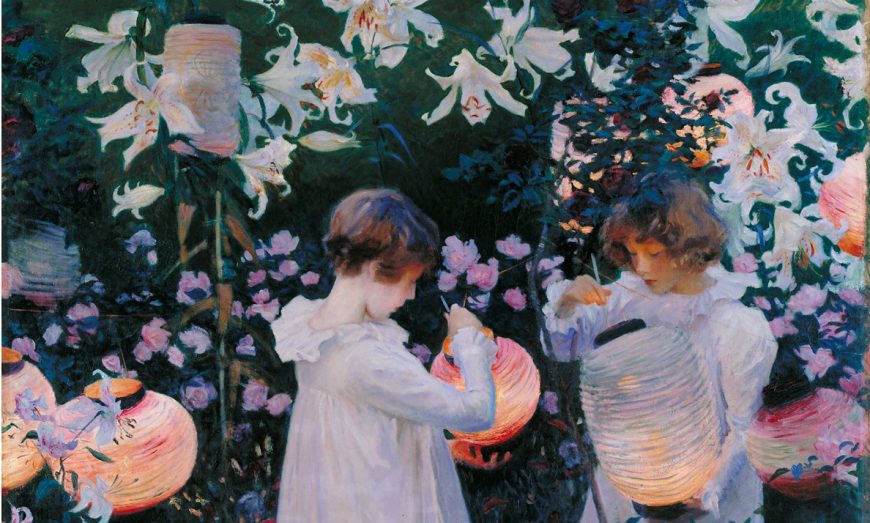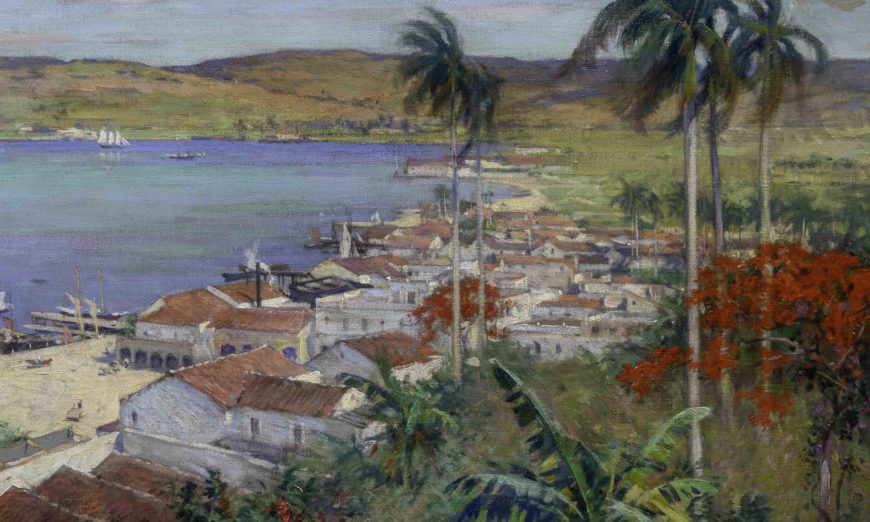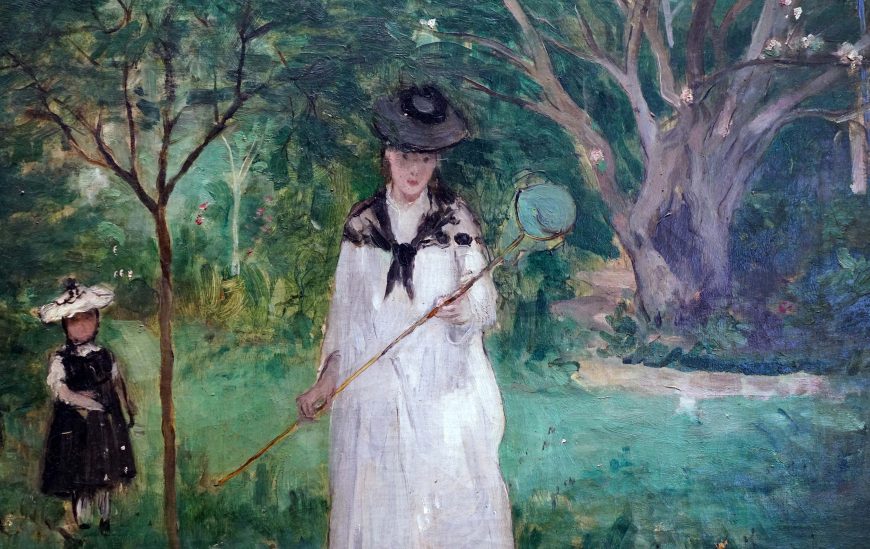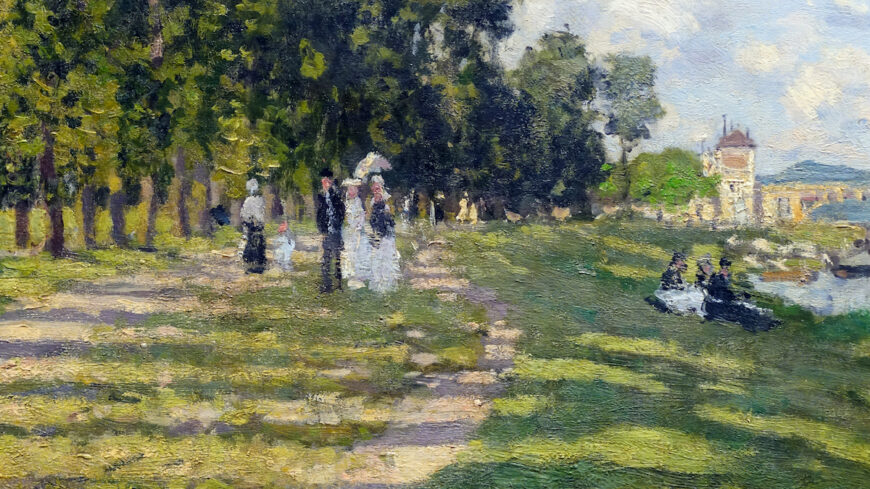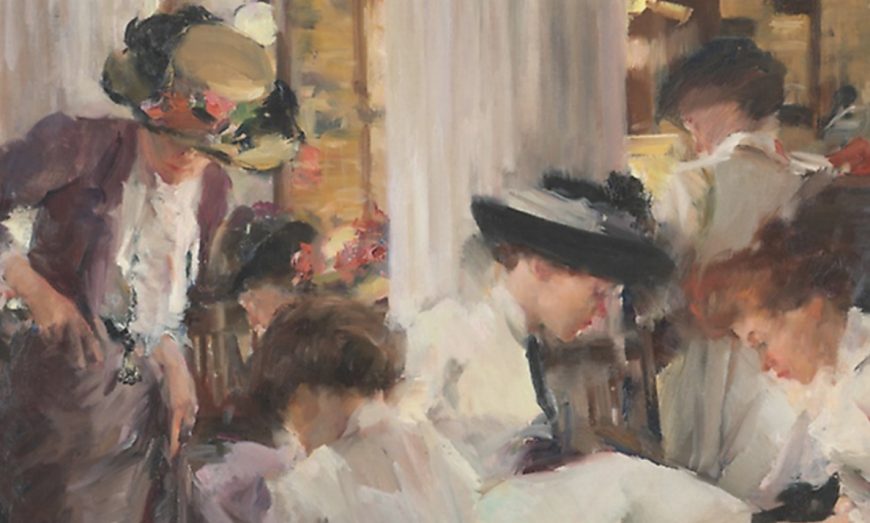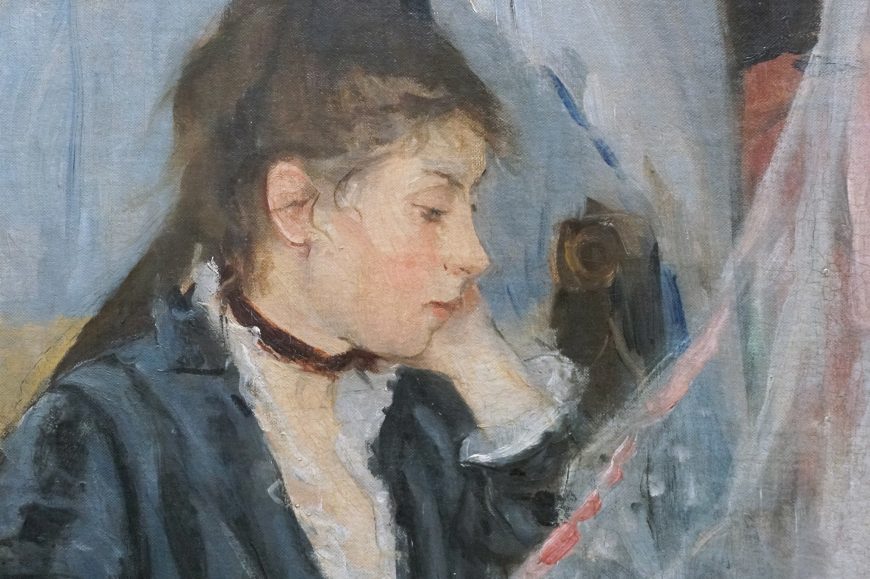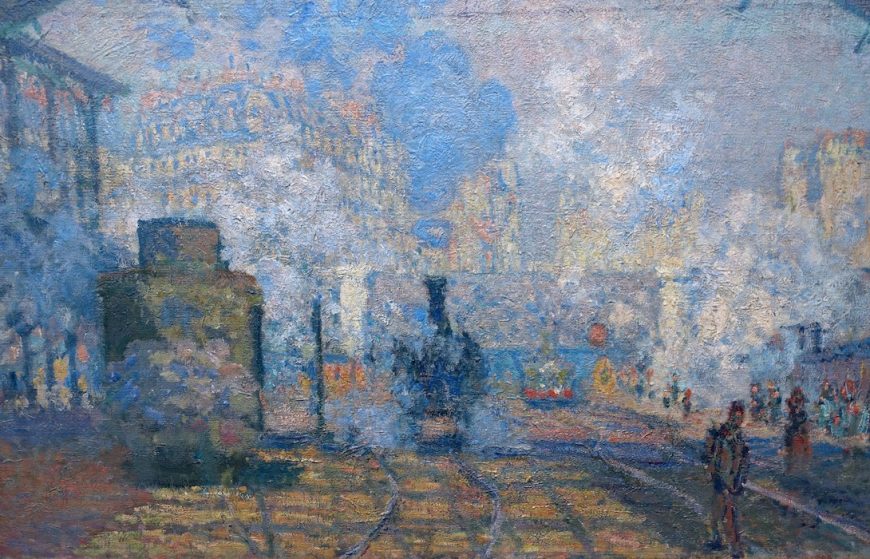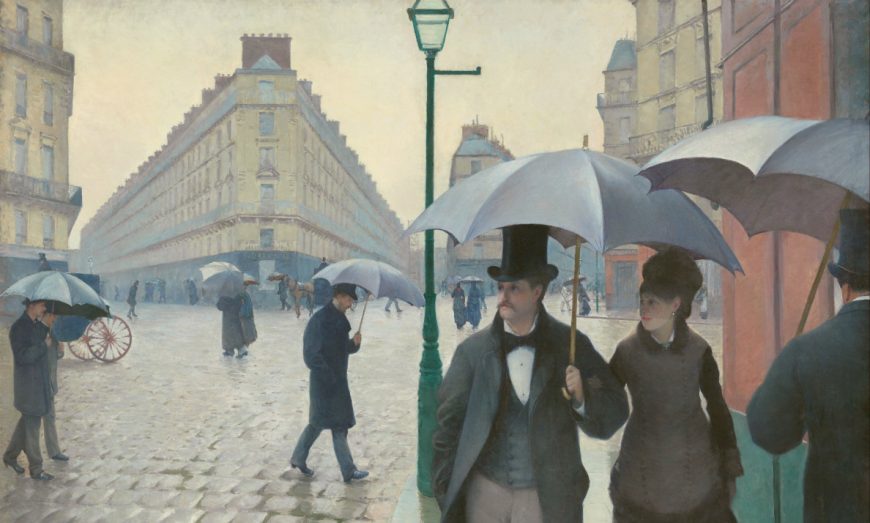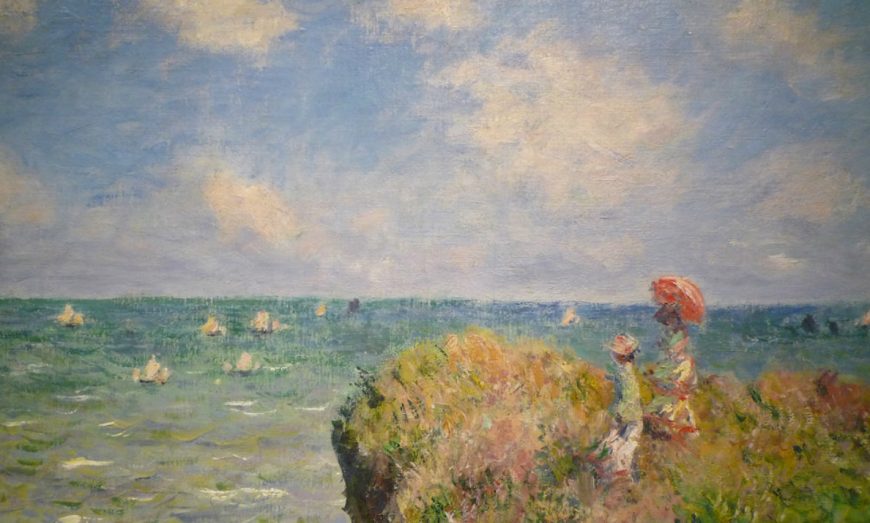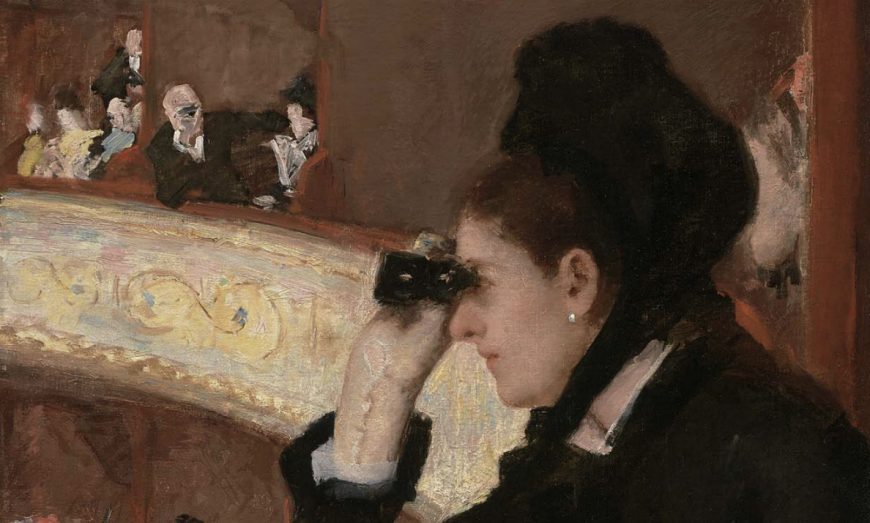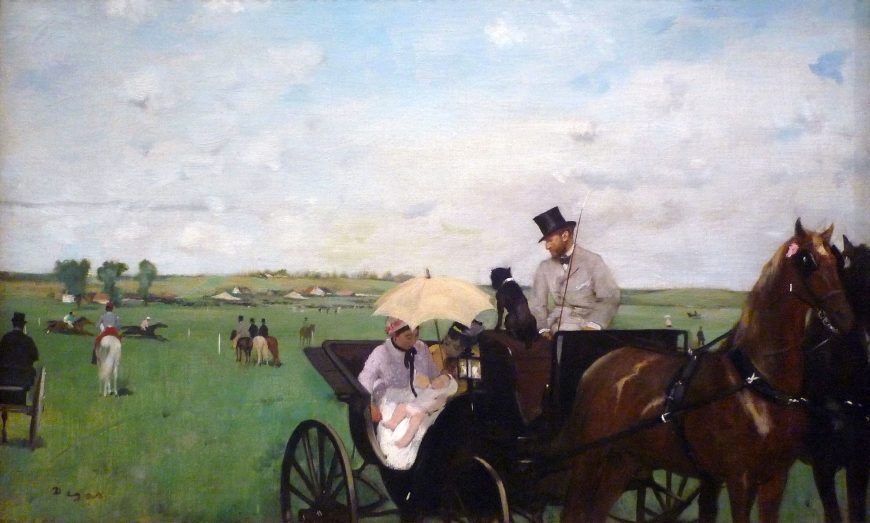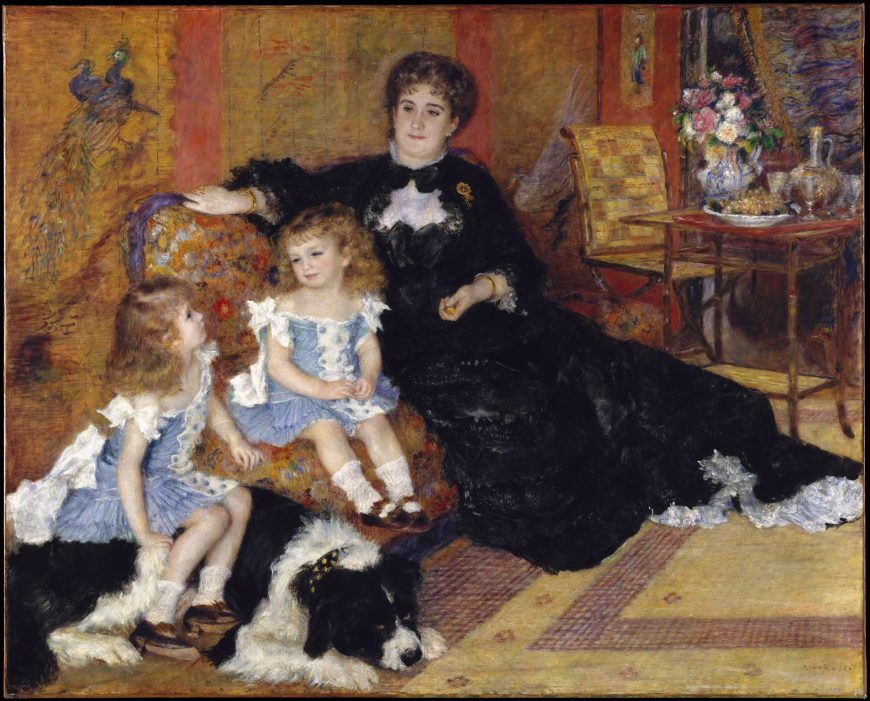
Pierre-Auguste Renoir, Madame Georges Charpentier (Marguérite-Louise Lemonnier) and Her Children, Georgette-Berthe and Paul-Émile-Charles, 1878, oil on canvas (153.7 x 190.2 cm) (The Metropolitan Museum of Art)
What do clothes reveal about the wearer?
When artists like Pierre-Auguste Renoir painted portraits of real people, their work became embedded with clues about cultural beliefs at a particular moment in time — including notions of beauty, propriety, status, and gender. In this portrait by Renoir, the artist captured the likeness of Madame Charpentier with her two children in an intimate setting within the family’s elegant Parisian townhouse.
This work is one of several commissioned by Georges Charpentier, an influential publisher and an early collector of Renoir’s work. In this portrait, Renoir depicts Marguérite Charpentier seated on a richly patterned settee alongside her two children and the family’s large Newfoundland dog in a small room filled with precious objects including Japanese screens, crystal and porcelain. Renoir’s palette is lush and his brushwork confident; the careful composition with its strong diagonals invites the viewer into this private space.
Gender and status
This large-scale work received favorable reviews when it was exhibited in a prominent position at the Salon of 1879 in Paris, and Renoir later acknowledged the efforts of Madame Charpentier in helping him gain subsequent portrait commissions. However, in the decades after its initial reception, viewers have often been surprised to learn that one of the children is a boy, since both children are dressed alike. This essay analyzes the garments and accessories worn by Madame Charpentier and her children as markers of status and gender at that time in history. Gender —the cultural construction of identity that distinguishes man from woman and boy from girl —is typically represented through the fashioning of the body, including the clothing and accessories, the styling of the hair and the wearing of makeup or other body modifications.
The fashionable Parisienne
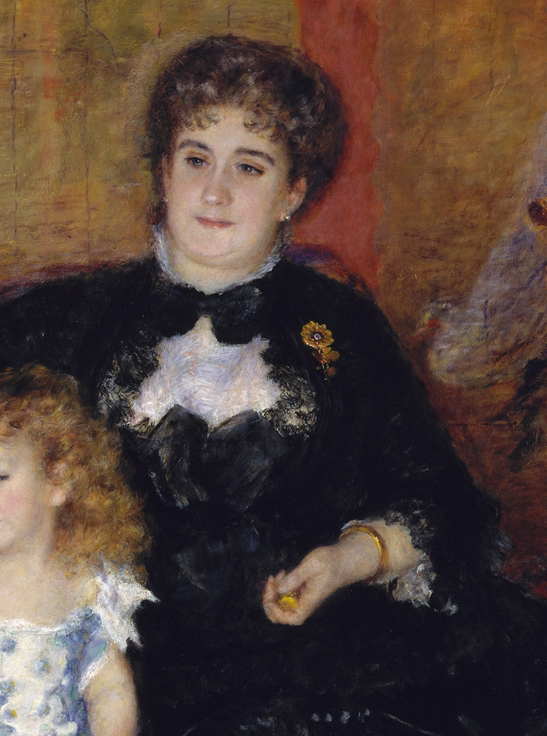
Pierre-Auguste Renoir, detail, Madame Georges Charpentier (Marguérite-Louise Lemonnier) and Her Children, Georgette-Berthe and Paul-Émile-Charles, 1878
In this portrait, Madame Charpentier is dressed in a long-sleeved black silk afternoon dress expansively trimmed with lace. Each element of her dress is indicative of her stature as the wife of a wealthy man.
Her close-fitting dress is floor length, with a train that pools on the floor beside her to reveal her white ruffled underskirt. The dress has no bustle, but rather is flat-backed; this style of dress was in fashion for a brief interval of two or three years towards the end of this decade, and this small detail marks the wearer as a close follower of fashion.
Marguerite has added several pieces of jewelry to her ensemble to signal the family’s wealth, including pearl earrings, a daisy brooch pinned to her left shoulder, two heavy gold bangles on both wrists, and several rings on her fingers.
The color of the dress signals chic, rather than mourning; black was a fashionable color for an elegant afternoon dress that would be worn to receive visitors or go visiting in one’s social circle. Madame Charpentier was known for her sophisticated literary salons in which she entertained writers like Flaubert and Zola, and this formal daywear dress would be suitable for just such a gathering. Similar dresses from 1878 can be found in museum collections, and an example is shown below.
Dressing children in the nineteenth century
In Renoir’s portrait, the children — Georgette, age six, and Paul, age three — are dressed in identical sleeveless, open-neckline, dropped-waist short dresses made of pale blue moiré silk trimmed with white silk. Both children have similar hairstyles with shoulder-length wavy hair. The only discernible difference in their attire is their footwear; Georgette wears shoes with a small heel, while Paul wears flat shoes with a mid-foot strap. These children, dressed alike in their expensive and elegantly trimmed silk frocks, are fashionable accessories for their elegant mother.
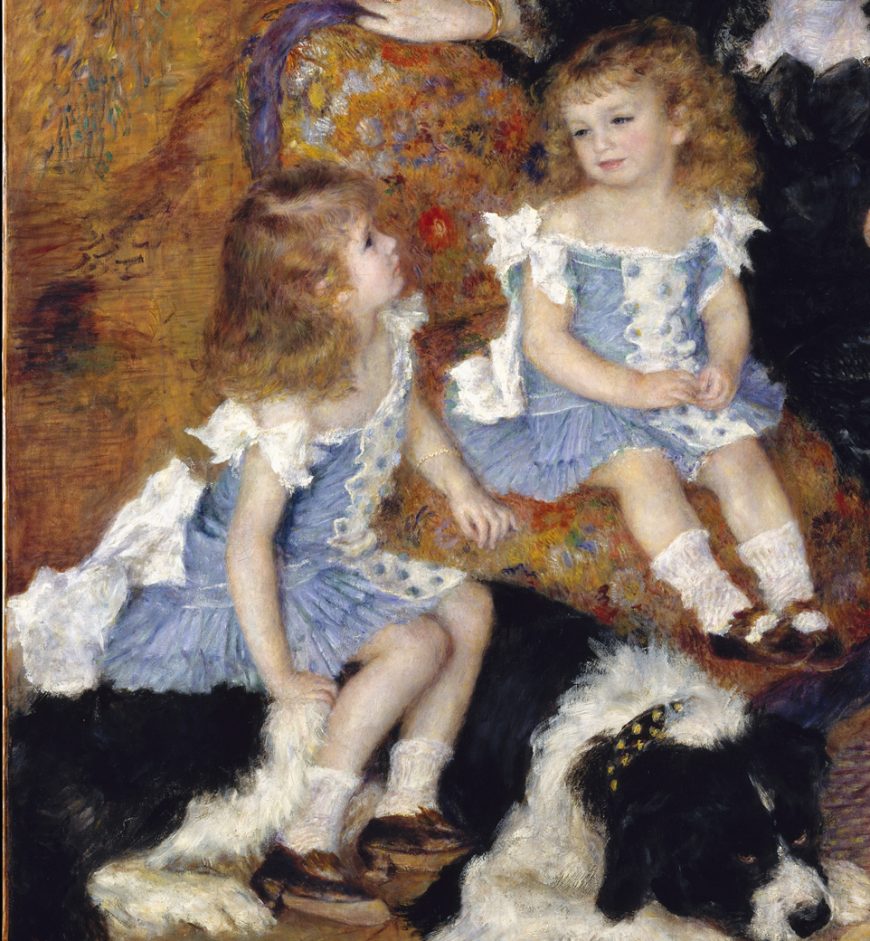
Pierre-Auguste Renoir, detail, Madame Georges Charpentier (Marguérite-Louise Lemonnier) and Her Children, Georgette-Berthe and Paul-Émile-Charles, 1878
The identical dresses worn by the Charpentier children in this painting reveal a little-known aspect of nineteenth-century western dress codes in which infants and young children were dressed alike in dresses or petticoats until about age four or five. At this time in history, when doing laundry was a tedious and lengthy process, having young children wear petticoats or frocks until they were toilet-trained made sense from a practical standpoint. As well, infants and young children were seen as asexual beings and for this reason were dressed alike. For example, in the fashion plate shown below, the child is dressed in a jacket and skirt that could be worn by either boy or girl.
Photographs from the time also capture many young boys dressed in petticoats or a tunic and skirt, including this undated photo of two young boys. The younger boy is wearing a checked ensemble consisting of a tunic and a skirt trimmed in velvet while his older brother wears a wool suit consisting of a jacket worn with knickerbockers.
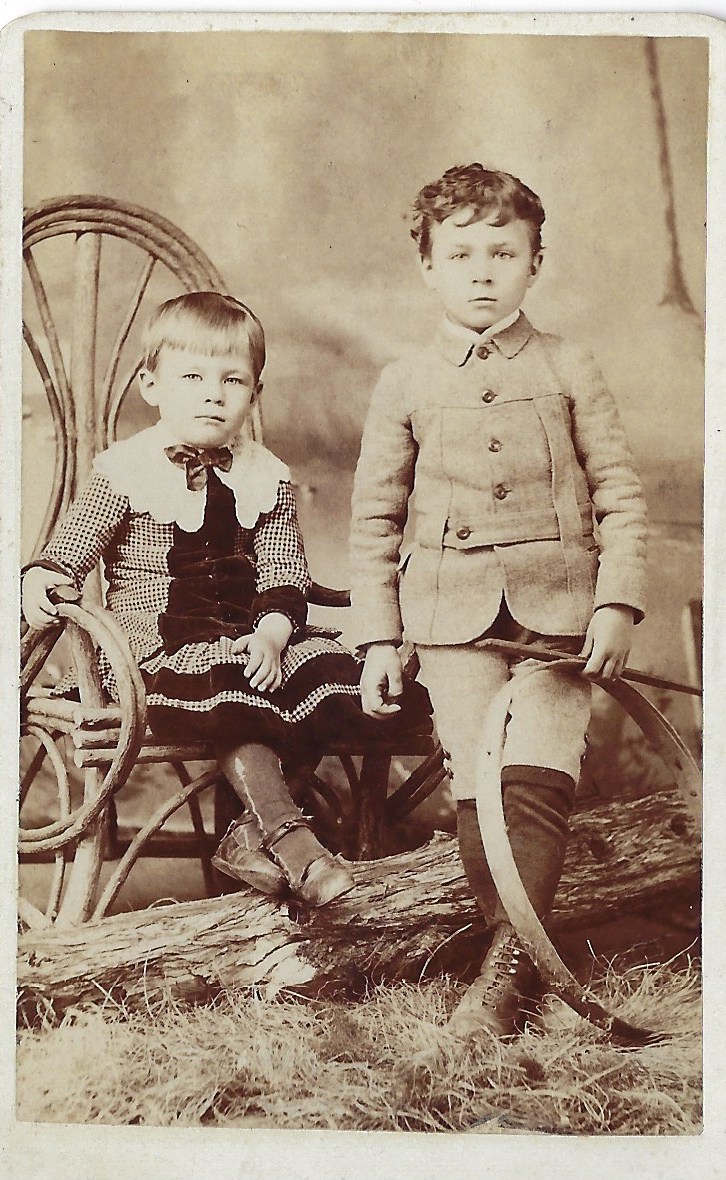
Carte de visite photograph of two young boys, c. 1870s ( photographer M.E. Robb, author’s collection)
The transition from petticoats and dresses into short pants and then trousers took on symbolic importance as a rite of passage for a boy, but the age at which this occurred was a matter of individual choice,
…as every mother is desirous that her little ones should be seen at their best, it will be her pride and pleasure to exercise her taste and judgement in this direction.As quoted by Clare Rose, “Age-related clothing codes for boys in Britain, 1850-1900,” Critical Studies in Men’s Fashion, vol. 2 (2015), pp.139.
Tailoring guides from this time reveal an age-related progression of attire for boys from petticoats indicated before age 3; jackets with skirts suggested for ages 3 to 6; tunic over trousers for boys aged 6-12; short wool jackets and trousers for ages 12-15; and suits for boys over age 15.
With the emergence of department stores and mass-production methods for clothing in the latter part of the nineteenth century, the options for boys expanded, but there was also a significant shift in ideals of masculinity that resulted in a marked restriction in the types of clothing and the colors available for boys. As historians including Jo Paoletti have observed, by about 1920, it was seen as highly inappropriate for boys to wear dresses, lace, ruffles, and other feminine-coded garments details or colors.
Our own biases
Renoir’s portrait of the Charpentier family reminds us that the dress codes that signal gender are linked to culture as well as a specific time and place in history. The idea that boys do not wear dresses dates back only about a century. Gender is a culturally specific notion — something that is learned rather than innate. Interpreting a painting such as this one by Renoir requires careful observation and reflection of the inherent biases of our own standpoint in culture.


